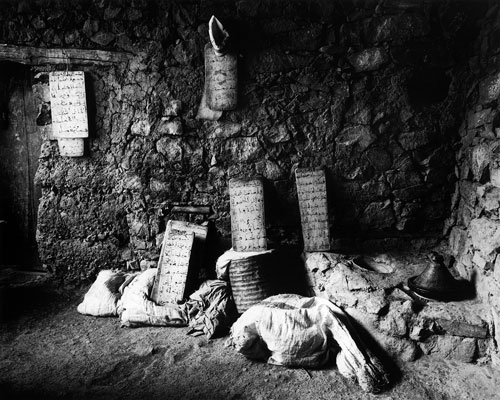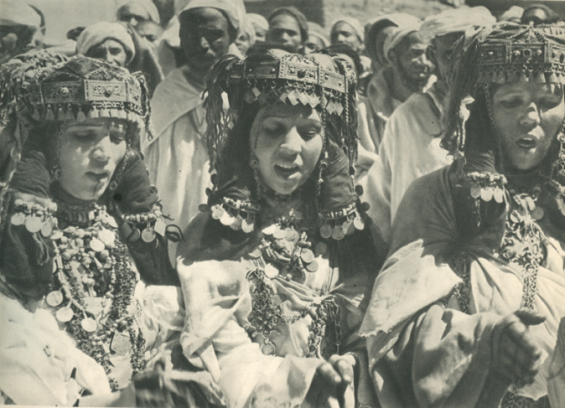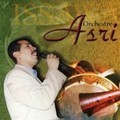At bedtime, grandmothers in the Atlas Mountains used to tell their grandchildren the story of Lunja, a young, unfortunate girl raised by an ogress, and her half-brother's quest to save her. The story combines two worlds: the land of ogres and the land of humans, and two societies: an ancient matriarchal one and a newer, male-dominated culture.
The story of Lunja, an oral folktale in Amazigh, is told across the Maghreb with variations in Morocco and Algeria, reflecting the region's history.
In Morocco, particularly among the Ait Warayn tribe, the tale details Lunja's half-brother's quest to save her from the ogres, following her wise and witty instructions. This version was compiled by Michael Peyron, a specialist in Berber language, literature, and culture.
Lunja and her ogress foster-mother
In his work «An Unusual Case of Bride Quest: the Maghrebian 'Lunja' Tale and Its Place in Universal Folklore» (Langues et Littératures, 5, 49-66), Peyron recounts the story of a tent-dweller with two wives, one of whom was Lunja's mother. Hated by her stepmother, who preferred her own baby boy, Lunja was abandoned when her family left their camp.
Fortunately, Lunja was rescued by the Ghula, an ogress, who took her to her den, adopted her, and raised her to be the most beautiful of girls. Lunja had long, dark hair, which she would hang down the cliff to help the ogress return to her lair after hunting.
Lunja lived with the monster, whom she was forced to call mother. One day, she learned from a servant that her brother had come to rescue her. Thus began her brother's adventurous journey to the land of the Ghuls to rescue his sister.

As with many quest-like journeys, he met a wise old woman who instructed him on how to safely enter the ogre-land. «To reach Ogre-land», she told him, «You must cross seven rivers». Each river was guarded by an ogre «stirring some unspeakable gruel in a filthy cauldron».
The hero was advised to address each ogre courteously and compliment their cuisine to guarantee safe passage. Following the wise old woman's instructions, he reached the land of the monsters and met a servant-girl who delivered his message to Lunja while the ogress was out hunting. The messenger brought Lunja a ring from her brother, reminding her of him, her childhood, and long-lost family memories.
Lunja then did a Rapunzel-like move, hanging her long hair down the cliff for her brother to climb into the Gula’s house. When the ogress returned, she smelled human flesh and detected the brother. He then embarked on another quest to get his sister out, masterminded by Lunja, who challenged her foster-mother to a fire-jumping contest.
«A huge pile of wood was soon blazing, and while Lunja easily cleared the obstacle, the ogress landed in the middle of the fire on her first jump. Lunja let her roast until she was shriveled up and half-dead», wrote the French writer.
Fleeing the ogress
The brother then revealed himself, climbed onto his horse, grabbed Lunja and the servant-girl, and fled the ogress’s den. The ogress, injured but not dead, pursued them. When they reached a raging river blocking their way, Lunja recited a special phrase that dried the riverbed just long enough for them to cross safely.
When the ogress arrived, she couldn't cross the river and asked Lunja for help. Cleverly, Lunja tricked her into believing eating the marrow from her leg bones to gain strength will help her cross the river. The ogress hit her leg, crippling herself, and drowned.
Afterward, the hero killed the servant-girl, took off her animal-skin clothes, and dressed his sister in them. As they were almost home, a giant eagle attacked. Lunja escaped, but her brother, along with his horse and gun, was swallowed by the eagle.
From inside the eagle’s stomach, the hero was heard telling his sister not to cry but to find their mother, who would be nearby with her camels. He instructed her to tell their father to sacrifice a black bull at the top of the nearest hill to rescue him. Even though the request came from a servant-girl in animal skins, which didn't command much respect, the father reluctantly carried out the instructions.

The sacrificed bull attracted the attention of the King of Birds, who had swallowed the youth. The King of Birds called all the lesser birds to feast on the bull's carcass. Once the feast started, the King of Birds ate so much he couldn't fly. The youth's father then demanded the return of his son, threatening to kill the King of Birds if he refused. The monstrous bird then restored the youth.
The youth was happily welcomed home, but the joy was short-lived when he announced he wanted to marry the servant-girl in animal skins. Ignoring attempts to dissuade him, he prepared for the wedding. When Lunja removed her disguise and put on her bridal clothes, everyone saw her stunning beauty. The story ends with the hero marrying his half-sister Lunja.
From a matriarchal society to a male-dominated one
In other modern versions of the tale, such as a Tangier one, Lunja and the hero are unrelated to avoid the incest motif. Others give Lunja the name Haina, especially the Imfedwaq tribe version. It also includes different details like being kidnapped by a male ogre and disguising herself as a greyhound, with the hero being swallowed by a crow instead of an eagle.
In Oujda and Beni Znassen versions, Lunja’s family are tent-dwelling nomads, but they also have a bean field. The bean-field motif serves as a catalyst, bringing the nomads into direct contact with the ogress, the researcher explains.
In Algeria, versions from Kabylia start the tale with two men hunting in winter, with one of them wishing to marry a woman with skin as white as snow and lips as red as blood. The second tells him about the ogress's daughter, who possesses such qualities.
Other Algerian versions depict Lunja as a beautiful, human-like woman who attracts men, princes, and kings but devours them to stay true to her monster ogress nature.
To Peyron, the story with its variations, especially the one of Ait Warayn, reflects a shift from ancient matriarchal societies, which worshipped mother goddesses, to patriarchal cultures emphasizing male dominance. The female characters in the story demonstrate decision-making skills, power, and wisdom, especially the old woman who helps the hero in his quest.
Trying to flee the monster, Lunja used her intelligence to secure her escape with her brother. «The chief character is a girl, whereas the vast majority of tales produced by the Maghrebian socio-cultural environment have a boy or man for hero», explained the French researcher.
«Not content with being the heroine, Lunja is seen to take the initiative even in the presence of the hero, not least when she masterminds their escape from the ogress's cavern. Such emphasis on feminine predominance suggests a very ancient, possibly prehistoric origin for this tale».
Moreover, the tale can also be interpreted as the quest of an adolescent hero achieving full maturity. Whether you've heard it before or not, the tale of Lunja deserves to be remembered and perhaps told again to our young ones at bedtime.





 chargement...
chargement...
















